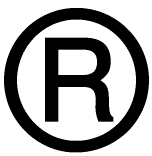Trademarks: Intellectual Property Audits, Part 3 of 4
 Welcome back to the third installment of our IP Audit part 3 of 4. This section will focus on trademarks. Did you know that trademarks can be registered on the state or federal level? A person conducting business across state lines is recommended to file federally. As part of any company’s due diligence, it is always best to have trademark searches performed prior to filing any applications. This will ensure that your trademark will not pose any conflicts with trademarks owned by other parties.
Welcome back to the third installment of our IP Audit part 3 of 4. This section will focus on trademarks. Did you know that trademarks can be registered on the state or federal level? A person conducting business across state lines is recommended to file federally. As part of any company’s due diligence, it is always best to have trademark searches performed prior to filing any applications. This will ensure that your trademark will not pose any conflicts with trademarks owned by other parties.
Rules for registering a trademark related to goods is different from registering a trademark related to services. For trademarking goods, the trademark must be physically attached to the product itself, either on the label or the packaging. In order for the trademark to relating to services, it must be used in connection with some form of media listing the services offered. The media can include items such as: websites, brochures or print advertisements.
Before your trademark can be registered, the USPTO requires proof of actual use of the trademark. However, in most foreign countries, they have no such requirements. They actually prefer the idea of “first to file,” meaning that if you own a trademark and are doing business overseas, you may be prevented from using that trademark overseas if it is not registered.
During the IP Audit, you will need to go through all possible trademarks that should be protected and make sure they are being used properly. Make sure you come up with a time line of application deadlines. If you plan on using both a U.S. application and international trademark application, the international application must be filed no later than six months after the U.S. filing date.
After going through your trademark possibilities, it is a good idea to initiate a trademark monitoring program. The program is a great way to find and possibly oppose other marks that are the similar, if not the same. Completing this procedure will protect the company and any trademarks registered to them.
Leave a Reply